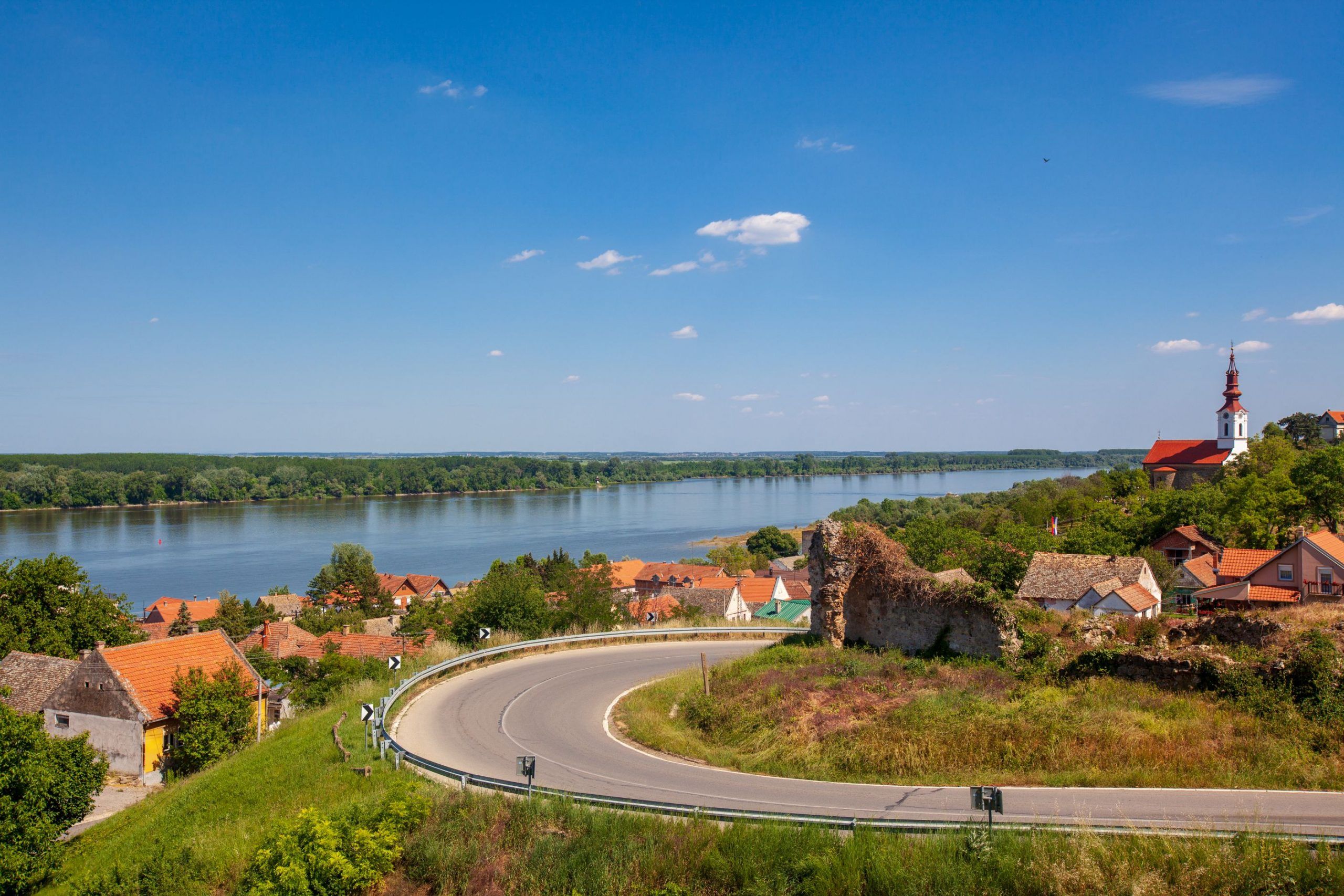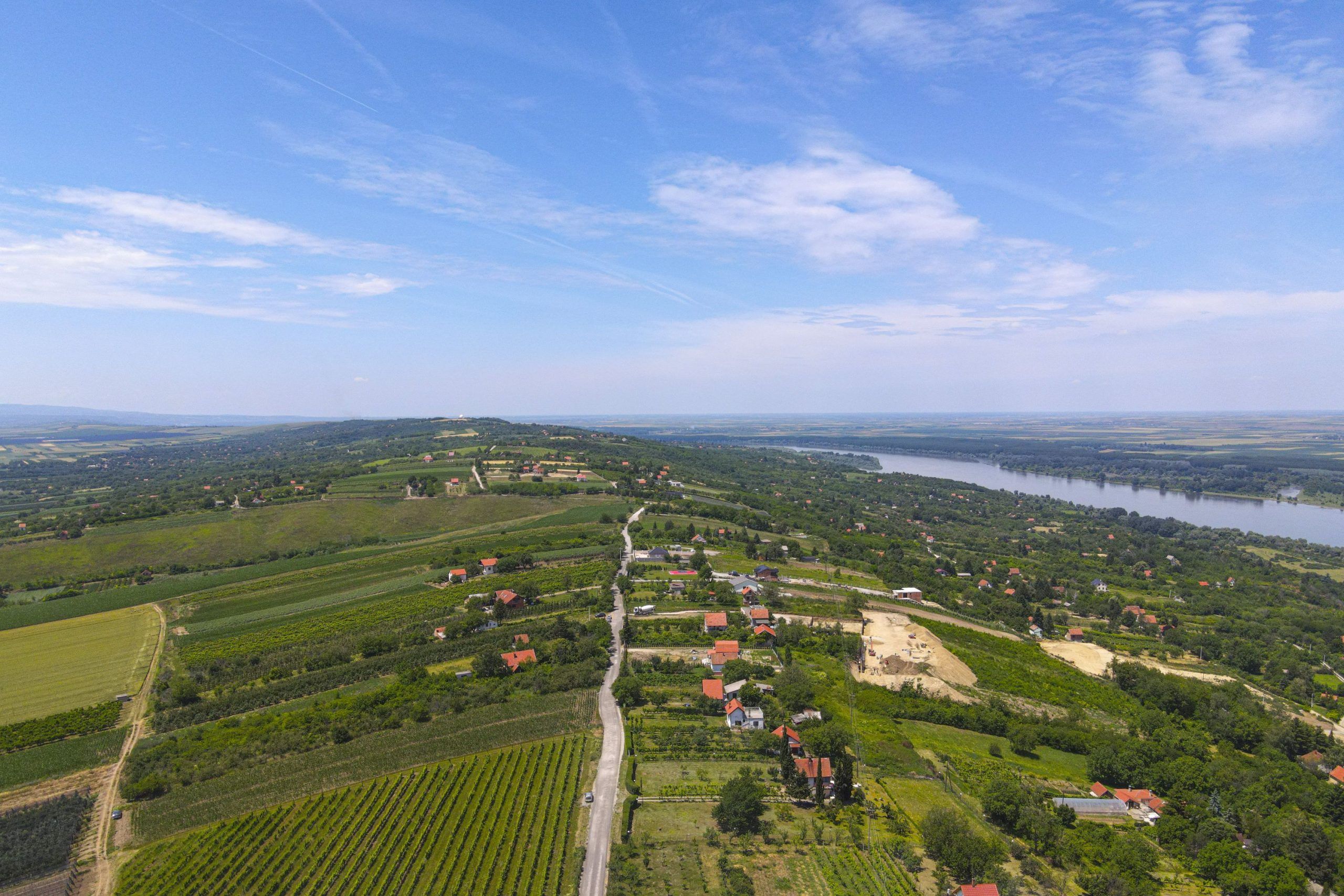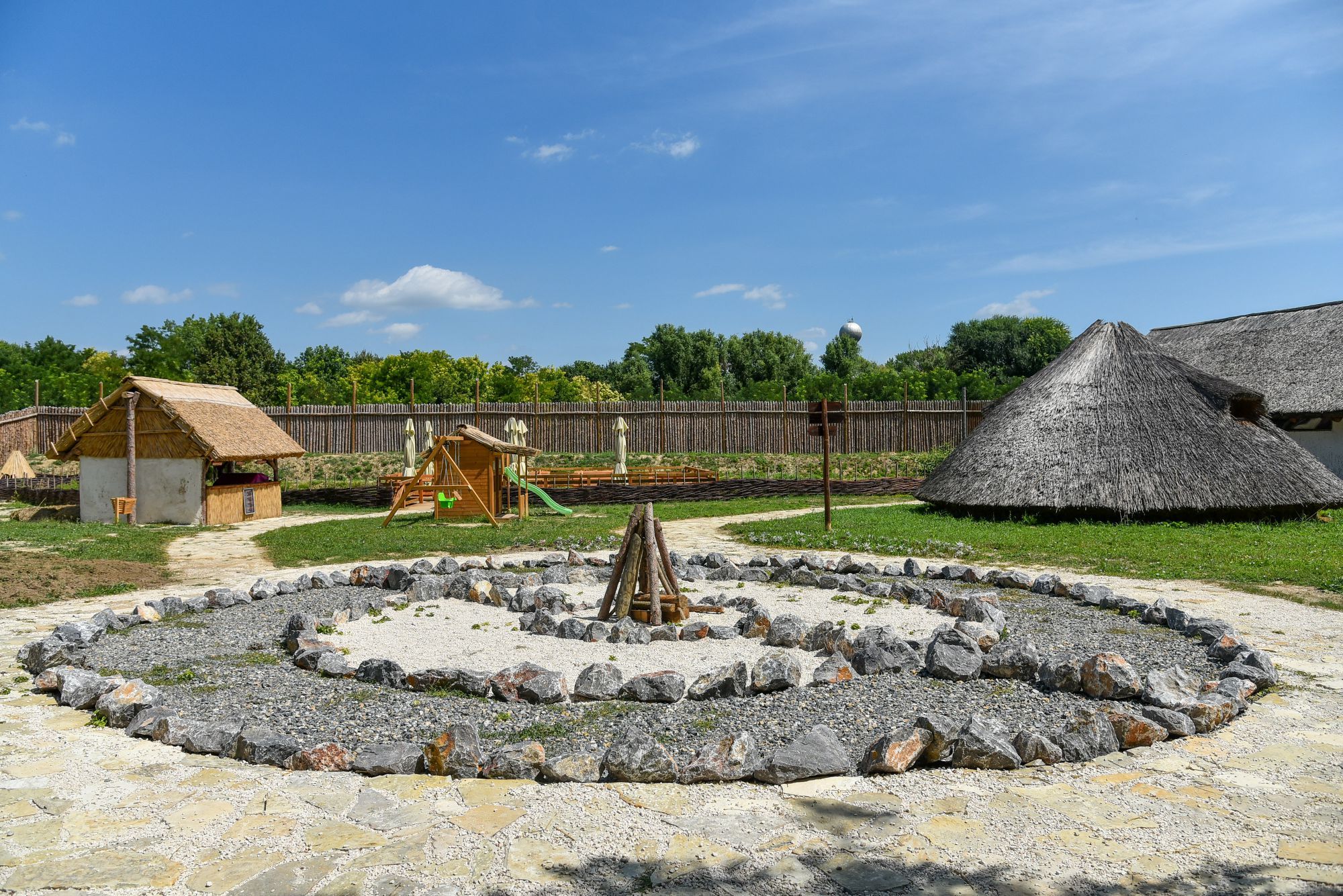Krčedin-Slankamenački Vinogradi-Stari Slankamen-Novi Slankamen-Inđija
The eastern part of Fruška Gora is rich in natural rarities and cultural and historical monuments, as evidenced by the loess profiles, Krčedinska ada, the banks of the Danube and the monumental heritage, especially the one concentrated in Stari Slankamen. It is also the part of the tame Fruška Gora that is extremely suitable for viticulture and winemaking where there is a specialized vineyard settlement – Slankamenački Vinogradi.
The vineyards of the eastern Fruška Gora that descend towards the Danube create a calming tameness, and those on the stretch of Ćerlin, above the confluence of the Tisza and the Danube, fascinate. The following grape varieties[1] are grown on the slopes of the eastern part of Fruška Gora, which spread on all sides: Italian Riesling, Slankamenka, Muscat Crocan, Chardonnay, Sauvignon White, Rhine Riesling, Sremska Zelenika, Muscat Ottonel, Tamjanika, Vranac, Prokupac, Shiraz, Muscat Hamburg, Muscat Ruža, Marselan, Petit Verdot, Rebo, Cabernet Sauvignon, Merlot, etc. Every year in June, wine producers and lovers gather at the traditional Fruška Gora Wine Festival in Inđija, proving that the eastern Fruška Gora is a wine region par excellence.
Stari Slankamen is a village that captivates with its romantic beauty thanks to the layers of history on the one side and orchards, vineyards, loess deposits, sandy beaches and adas (river islands) on the other. Here, at the confluence of the Tisza and the Danube, the Romans built the fortress of Akuminkum on the foundations of the opidum built by the Scordisci. The Hungarians built on the same foundations in the Middle Ages. In historical sources, the fortress is mentioned in 1072 as Kastrum Zelenkamen.
It is known that at the beginning of the 15th century it was under the rule of the Branković family, that the Ottoman Turks conquered it in 1521 and that it was destroyed based on the provisions of the Belgrade Peace in 1738. The remains of the Slankamen Fortress are still visible today. The monument from 1892 on the nearby hill, dedicated to the Battle of Slankamen, where in 1691 the Austrian-German army, in which about 10,000 Serbs fought, defeated the Turkish army, reminds us of the period of the struggle against the Ottomans.
In the village there is the Church of St. Nicholas, which is believed to be among the oldest in Srem. The legend says that the temple was built by Vuk Grgurević (popularly known as Zmaj Ognjeni Vuk). The only remaining fresco depicting the Three Hierarchs from the 15th century testifies that the temple was built before the first written record of it in 1501.
The iconostasis from 1746 and the four throne icons are the work of Vasilije Ostojić and represent great value. In addition to the benefits brought by the Danube and the Tisza, there are also unique loess deposits, and you can also not avoid visiting one of the rare salt water springs in Vojvodina used by the Romans and Ottoman Turks, where a modern health resort was founded in 1906 already. You can end the visit by going to the Acumincum Winery, Macura Produkt Wine Production in the place itself, Stojanović Winery in Slankamenački Vinogradi or Spasić Manufacture in Novi Slankamen.
Krčedin is close to Stari and Novi Slankamen. Today, it is known for a large number of weekend houses along the Danube, where there are also sandy beaches. It is also known for Krčedinska ada, a part of the Special Nature Reserve “Koviljsko-Petrovaradinski rit” (“Kovilj-Petrovaradin Marsh”) where herds of Podolian cattle, horses, sheep and donkeys are free. However, the settlement has an interesting history, and among its material traces are the Serbian Orthodox Church of St. Nicholas from the 18th century and a military border building built in the second half of the 19th century. Don’t miss to visit Patkov vinograd Winery, a winery where wines bear the names of literary and film heroes.
Inđija is a municipal multiethnic centre, and along with Stara Pazova, it is the most important economic centre in eastern Srem. Contemporary Inđija was created in the middle of the 18th century by displacing the village of Patke and settling the inhabitants of Beška. During the 19th century, the development of crafts began, and then manufacturing and factory production, and the settlement acquired the city functions that it still has today. Some of the attractions that adorn Inđija include: the Serbian Orthodox Church of the Presentation of the Mother of God, built in the middle of the 18th century, the Roman Catholic Church of St. Rook that was built in the second half of the 19th century and the Vojnović House, an example of the construction of civic houses from the 19th century that is currently an exhibition part of the Cultural Centre of Inđija.
We should not forget the thematic tourist complex of the Celtic Village at the entrance to Inđija from the direction of Novi Sad. In the nearby Beška there is the Memorial Room of the painter Danica Jovanović (1886-1914), in Maradik there is the Ethno House Maradik that was founded in a rural household with a house that is 150 years old. The ethno house has an ethno restaurant, a souvenir shop, a cellar with a wine storage, an exhibition of agricultural tools needed for cultivating the land in the open, etc. You can end your visit to Inđija and its surroundings with wine tasting and purchase in Aven Winery.
For more information about Inđija and surroundings visit: http://indjijatravel.rs/?script=lat
Text: Gordana Stojaković
Photographs: Aleksandar Milutinović
Tourism Organisation of the City of Novi Sad is not responsible for changes in information and services.
The text posted in: August 2021
[1] The transcription of the grape assortment given according to: Cindrić, Petar and Vladimir Kovač (2007) “Vinogradarstvo i vina“ (“Viticulture and Wines“) Fruška Gora. Ed. Nebojša Jovanović and Jelica Nedić. Pg. 498. Beograd: Zavod za udžbenike.



